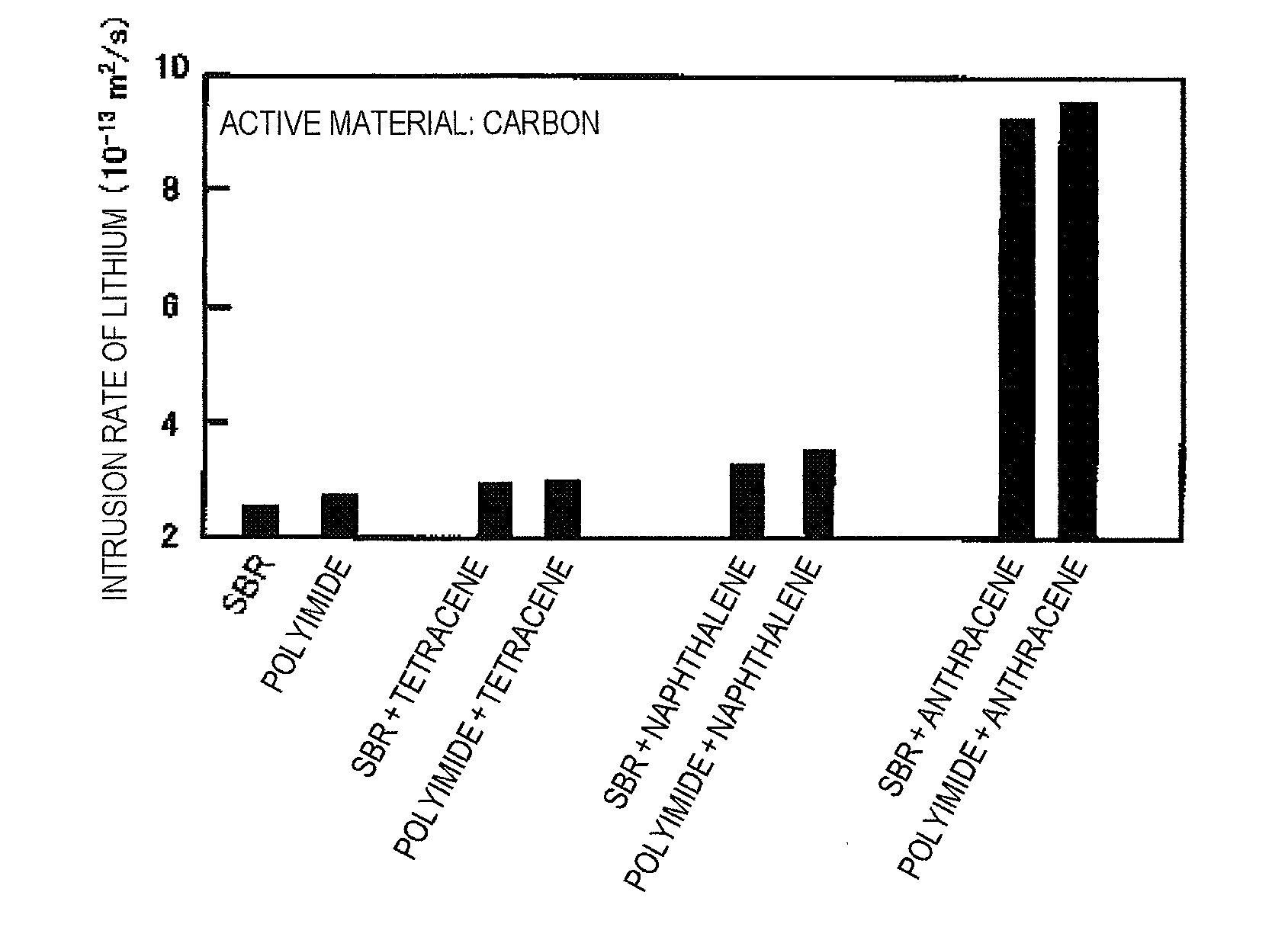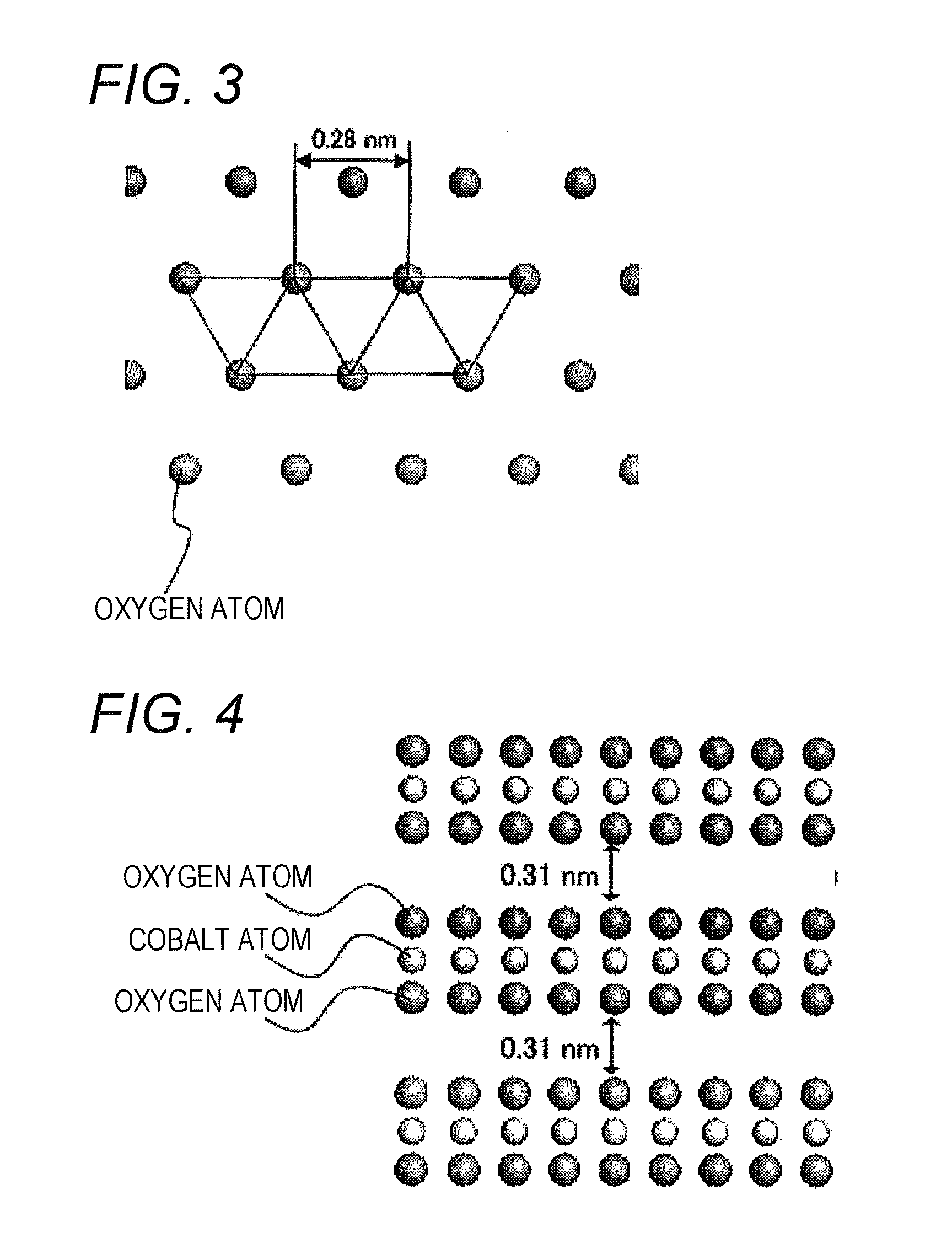Lithium ion secondary battery
a secondary battery and lithium ion technology, applied in the field of lithium ion secondary batteries, can solve the problems of difficult to improve a cycle life and longer cycle life of batteries, and achieve the effect of higher performan
- Summary
- Abstract
- Description
- Claims
- Application Information
AI Technical Summary
Benefits of technology
Problems solved by technology
Method used
Image
Examples
examples
[0053]In order to demonstrate an effect of the present embodiment, an intrusion rate (average diffusion rate) of lithium in an electrode was measured by a pulsed field gradient NMR method (PFG-NMR method). This method is performed by using a decrease in an echo signal (echo signal) according to diffusion. The echo signal represents resonance with a supplied pulse magnetic field. Specifically, the larger a diffusion coefficient is, the weaker the echo signal is. D is determined by using the relationship between an echo signal E and a diffusion coefficient D having E=exp(−αD) (α is a coefficient).
[0054]Measurement samples were prepared, which were obtained by combining styrene-butadiene rubber (SBR) or polyimide (Kapton) as a base material of a binder with naphthalene, anthracene, or tetracene as a polyacene additive. All the concentrations of the polyacene additives were set to 5 mol %. A measurement sample excluding a polyacene additive was also prepared as a reference. The base mat...
PUM
| Property | Measurement | Unit |
|---|---|---|
| mol % | aaaaa | aaaaa |
| length | aaaaa | aaaaa |
| distance | aaaaa | aaaaa |
Abstract
Description
Claims
Application Information
 Login to View More
Login to View More - R&D
- Intellectual Property
- Life Sciences
- Materials
- Tech Scout
- Unparalleled Data Quality
- Higher Quality Content
- 60% Fewer Hallucinations
Browse by: Latest US Patents, China's latest patents, Technical Efficacy Thesaurus, Application Domain, Technology Topic, Popular Technical Reports.
© 2025 PatSnap. All rights reserved.Legal|Privacy policy|Modern Slavery Act Transparency Statement|Sitemap|About US| Contact US: help@patsnap.com



